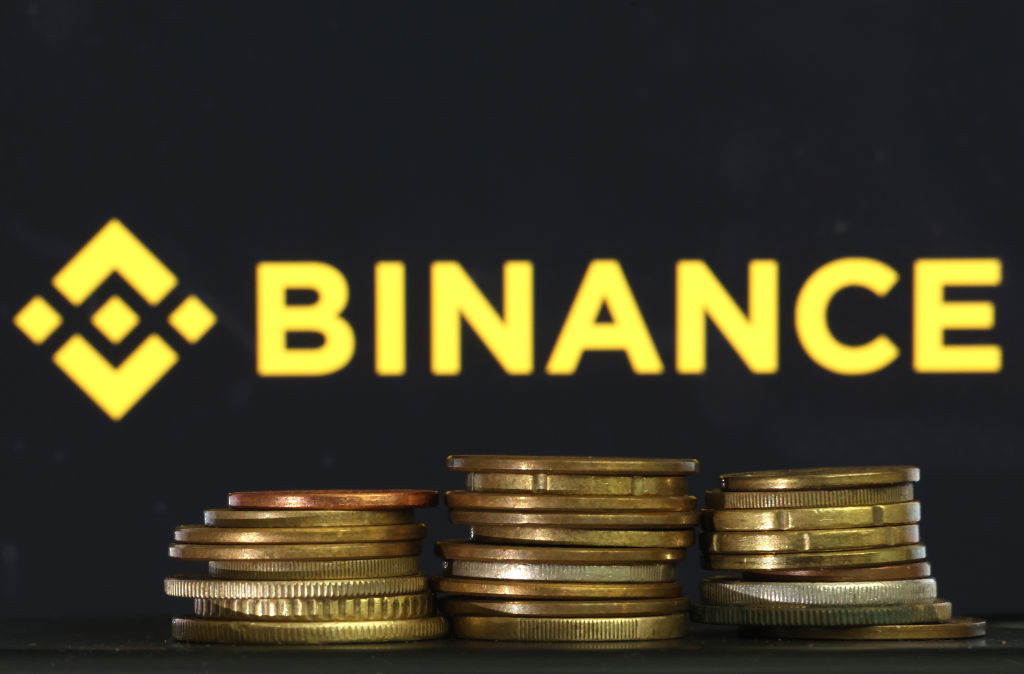When cryptocurrency exchange FTX collapsed, it should have been a boon for its rival Binance, but it only made things worse for the world’s largest crypto exchange.
The exchange — which reportedly employs over 6,500 staff — has faced an onslaught of headwinds since November last year when its Chief Executive Officer Changpeng Zhao (CZ) sold FTX’s FTT tokens. That move triggered a surge in withdrawals from FTX, which in turn revealed a shortfall on the rival exchange of over US$8 billion in customer funds.
But since then, all eyes have turned to Binance and CZ.
“Binance is still the biggest exchange in the world, but it has faced a difficult year marred by regulatory enforcement actions, falling volumes, and a reputational hit,” said Clara Medalie, research director at crypto data firm Kaiko.
Here’s Forkast’s guide to where things stand for Binance, almost a year after FTX’s downfall. Binance did not respond to a request for an interview or provide commentary for this article.
Where does and doesn’t Binance operate?
Binance is everywhere and nowhere all at once. The global exchange sits within a Cayman Islands holding company and has no formal headquarters — a structure that’s helped Binance skirt global regulations over the years.
“The exchange has been known to be accessible to users in all countries around the world,” said Robert Le, a crypto analyst at capital markets data platform Pitchbook. “Binance.com has in the past provided instructions on how to access their services via VPN.”
Binance is said to operate in over 100 countries, but only lists 45 on its website. The rise of the cryptocurrency market, when Bitcoin hit peaks of US$69,000, and its abrupt collapse put the spotlight back on the global operations of crypto exchanges as FTX’s collapse heightened regulators’ concerns.
The United Kingdom’s Financial Conduct Authority (FCA) raised concerns about Binance’s ambiguous corporate structure in 2021 leading to the financial regulator revoking the exchange’s U.K. permissions earlier this year. Last week, Binance attempted to reinstate some local services with a new partner, but the FCA promptly intervened, asking the partner to withdraw any existing approvals.
Binance sold its Russian entity to the newly-launched exchange CommEx amidst regulatory pressures and potential sanctions violations. Despite the ongoing divestment, Binance still lists Russia as an operational country on its website. Binance also closed shop in Canada due to restrictions on stablecoin use while withdrawing from several European countries, like Germany, the Netherlands, and Austria due to registration issues. It also sought deregistration in Cyprus, aiming to focus on fewer entities in Europe and comply with the European Union’s Markets in Crypto Assets (MiCA) regulation.
Binance exited Belgium only to return three months later. The exchange also reentered Japan and cleared the third stage of Dubai’s four step licensing process. Binance is also dominant in Turkey, said Kaiko’s Medalie.
Using fiat pairs trading volumes as a proxy for trading activity, Binance appears dominant in several developing countries. It has 86% market dominance in Brazilian Real transactions, 69% in Nigerian Naira transactions, and 57% in Argentine Pesos transactions, said Jacob Joseph, a research analyst at digital asset data firm CCData.
Binance’s legal battles
Global regulators have been homing in on Binance since FTX’s collapse. In February, the New York Department of Financial Services (NYDFS) ordered Binance’s stablecoin partner Paxos to stop minting Binance USD (BUSD). The loss of BUSD, the third largest stablecoin in the market at the time, was a major blow to Binance.
Then the U.S. Commodity Futures Trading Commission (CFTC) charged Binance, Zhao and the exchange’s former chief compliance officer Samuel Lim with operating an illegal derivatives exchange and evading federal law. The CFTC action was quickly followed by the U.S. Securities and Exchange Commission (SEC), which filed 13 charges against Binance and Zhao including operating an unregistered exchange and the unregistered sale of securities. Binance said it would vigorously defend itself against the allegations.
The exchange is also reportedly facing a number of investigations including from the U.S. Department of Justice over potential violations of Russian sanctions as well as a broader probe, according to Reuters.
In Australia, regulators have been investigating Binance’s former derivatives operations, while in France there’s been an investigation into whether Binance carried out adequate money laundering checks and illegally advertised to consumers. Most recently, a congressional committee in Brazil recommended the indictment of Zhao and several other executives last week for running “a financial pyramid scheme” in the country.
Binance is not taking the accusations lightly, splashing the cash on lobbyists and lawyering up. In the first six months of this year, Binance spent more than US$1 million on lobbying in the U.S., almost as much as it spent on lobbying in all of 2022, according to data from OpenSecrets.
Binance’s revolving door
As Binance splurged on legal support, it made cuts within its organization. Binance.US eliminated an unspecified number of jobs in June, while the broader company laid off around 1,000 employees in July. A few months later, Binance.US cut around a third of its workforce.
High-profile departures
| Position | Former Executive | Replacement (if applicable) |
|---|---|---|
| Binance.US’s CEO | Brian Shroder | Norman Reed (Interim) |
| Binance’s Chief Strategy Officer | Patrick Hillmann | – |
| Binance Global Head of Intelligence & Investigations | Matthew Price | – |
| Binance Chief Business Officer | Yibo Ling | – |
| Binance’s General Counsel | Han Ng | Eleanor Hughes |
| Binance.US’s Head of Legal | Krishna Juvvadi | – |
| Binance.US’s Chief Risk Officer | Sidney Majalya | – |
| Binance’s Head of Asia-Pacific | Leon Foong | – |
| Binance’s Global Head of Product | Mayur Kamat | – |
Notable executives remaining
| Position | Executive |
|---|---|
| Co-founder & Chief Customer Service Officer | Yi He |
| Binance’s Chief Compliance Officer | Noah Perlman |
| Binance’s Chief Marketing Officer | Rachel Conlan (Prev. VP of Global Marketing until September) |
| Binance’s Head of Financial Crime Compliance | Tigran Gambaryan |
| Binance’s Regional Markets Oversight | Richard Teng |
Binance and several of the executives who have departed attributed this to natural turnover rather than the exchange’s legal and regulatory battles.
“Some of our team members are growing into bigger roles, some outside of Binance. We are supportive of everyone,” said Zhao on X (formerly Twitter). “Some are doing new exciting ventures. I even made intros/references for many of them.”
Parting with partnerships
It’s not only employees that Binance has lost in the last year. Several key partnerships have come to an end including its relationships with Paxos and its on-ramp service providers Paysafe and Checkout.com.
The loss of on-ramp services are impeding the process of onboarding traders in Europe, said Kaiko’s Medalie. Binance’s market share in pound and euro trading volumes are down 6% and 14% respectively compared to 35% and 28% at the start of the year, said CCData’s Joseph.
Binance’s debit card programs have also halted with Mastercard ending its offering entirely and Visa distancing itself from the exchange. Internally, the exchange is streamlining services.
Some partnerships are continuing to bloom including plans to offer a stablecoin in Japan with Mitsubishi UFJ Financial and TrueUSD (TUSD), a little-known stablecoin, replacing BUSD.
Is Binance still too big to fail?
“Over the past year, the exchange has experimented with different types of trading promotions using little-known stablecoins such as TUSD or FDUSD,” Medalie said. “These trading promotions have temporarily boosted volumes, but because the markets are zero-fee, it has likely not translated into additional revenues for the exchange.”
Binance generates around 90% of its revenues from transaction fees, said Zhao in a November TechCrunch interview. The exchange maintains around 50% of global volumes, Medalie said, which is down from a high of over 70% earlier this year. Revenues for Binance’s U.S. arm is reportedly down 70% year-to-date.
“The discontinuation of the zero-fee trading promotion for USDT pairs in March, alongside increased regulatory scrutiny, has primarily driven Binance to record seven consecutive monthly declines in market share,” said CCData’s Joseph.
Exchanges, such as M2 — which is reportedly backed by Abu Dhabi — are hoping to take advantage of this change in market conditions. However, they still have to contend with broader headwinds including a general decline in trading appetite, a fast-changing regulatory environment and an already crowded landscape.
“No entity, regardless of its size, is immune to failure, with FTX, Terra/Luna, and especially Mt. Gox — which accounted for nearly 70% of the bitcoin transactions back in 2014 — serving as poignant examples,” said Joseph. “Should Binance fail, it would deliver a substantial blow to the industry and could potentially dissuade both retail and institutional participants from actively engaging in the crypto markets.”
This is a perspective shared by Pitchbook analyst Le. Though there would be no government intervention if Binance were to fail, he expects other exchanges such as Coinbase, OKX and Bybit to eventually fill the vacuum.
“The asset class has navigated through similar perils in the past and, given enough time, would likely continue to do so,” Joseph said.






